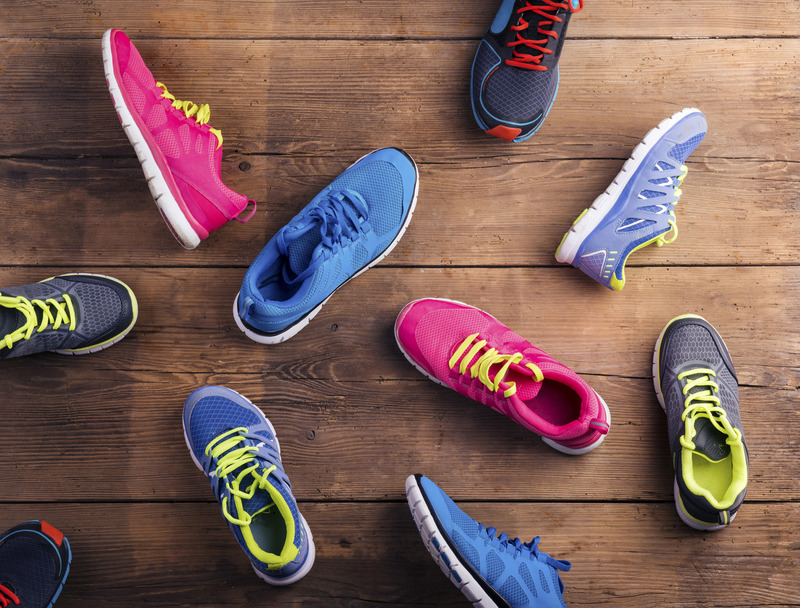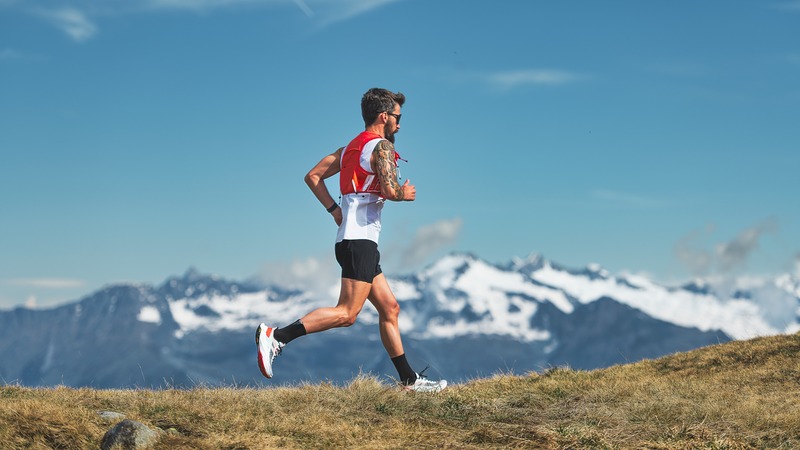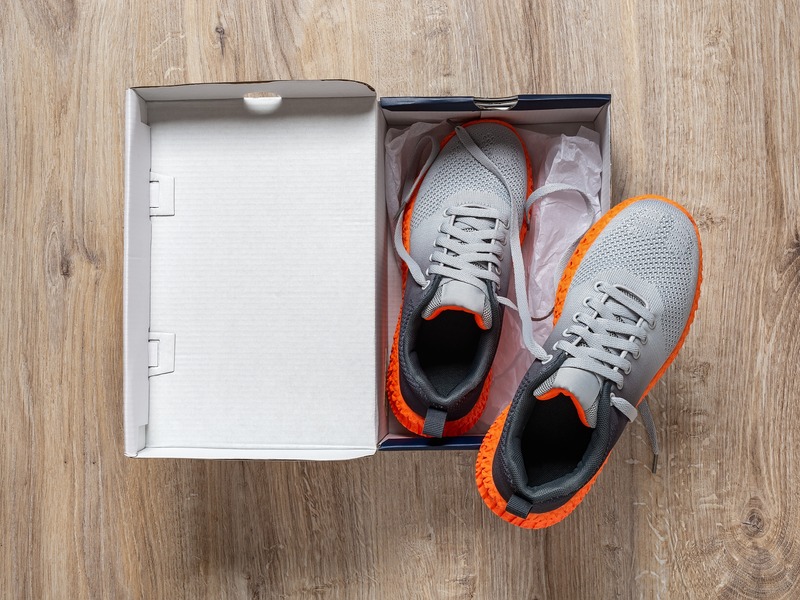Preventing Running Injuries: How the Right Shoes Can Keep You Injury-Free
June 29, 2024

When you buy through links on our site, we may earn an affiliate commission.
There's nothing more frustrating than a running injury. It can derail your training plan, sap your motivation, and, even worse, lead to more serious health issues down the line. While many factors contribute to running injuries, from training load to genetics, one of the most overlooked is your choice of footwear.
If you pause to think about it, you'll realize precisely why. Firstly, your running shoes are the only point of contact between your body and the ground. But they also play a role in how your feet move, how your legs absorb shock, and, ultimately, how your entire body handles the demands of running.
So, let's take a quick look at the most common running injuries and how getting your running shoes right can help you remain running rather than spending time on the sidelines.
Common Running Injuries and How They Relate to Your Choice of Footwear
It's fair to say that most runners experience an injury at some point. Whether it's a minor inconvenience such as a blister or something severe enough to cause a forced training layoff (such as a stress fracture), sometimes what we wear on our feet plays a part.
Yes, some injuries are unfortunate accidents or can't be avoided, but many can be somewhat mitigated with the proper footwear. So, let's look closely at some common running injuries and their relationship to our footwear choices.
Runner's Knee
Runner's knee is a painful condition characterized by pain around the kneecap, and although the leading cause of the condition is overuse, studies have suggested that taking action to prevent excess stress on the knee caused by overpronation (when your foot rolls inward) can help prevent recurrences.
Stability shoes with medial support can help counteract overpronation and reduce strain on the knee. But just be wary that shoes with excessive cushioning without adequate foot control can exacerbate the problem.
Plantar Fasciitis
Have you ever experienced stabbing pain in your heel or toward the back of your arch? It could be plantar fasciitis. It's a condition caused by inflammation of the plantar fascia ligament that runs along the bottom of your foot.
While the wrong shoe choice might not play a pivotal role in this particular injury, shoes featuring arch support can help prevent excessive stretching and strain on this ligament, while ample cushioning can soften the impact of each stride.
Shin Splints
Shin splints, a common ailment marked by pain along the shinbone, are often caused by a combination of factors, including overpronation, tight calf muscles, and improper footwear.
Look for shoes that provide adequate cushioning to absorb impact, and consider stability features if you tend to overpronate. Also, look at heel-to-toe drops. You might need a higher drop to take the strain off your lower leg muscles.
Achilles Tendinitis
Achilles tendonitis, an inflammation of the Achilles tendon, is another injury that can be aggravated by running shoes with a low heel-to-toe drop. As mentioned, low heel-to-toe drops place increased stress on lower leg muscles and tendons, including the Achilles and soleus.
Opting for shoes with a moderate heel-to-toe drop and ample heel cushioning can help alleviate strain on the Achilles and reduce the chances of developing this injury.
Stress Fractures
Stress fractures, tiny cracks in the bones, often occur in runners' feet and lower legs. They're most often caused by overuse and poor biomechanics. But poor footwear choices can also play their part.
Insufficient cushioning can increase the impact forces on your bones, while shoes that don't provide adequate support can exacerbate existing biomechanical issues, increasing the risk of stress fractures. You're most at risk of running in shoes with insufficient cushioning when they're coming to the end of their lifecycle, so make sure you replace your running shoes within the recommended window.
Blisters and Black Toenails
While not as serious as other injuries, blisters and black toenails can certainly put a damper on your runs. Ill-fitting shoes are the primary culprits, causing friction and pressure points that lead to these painful conditions.
Choosing shoes with a proper fit, breathable materials, and adequate toe box room prevents these issues. It may take you a few pairs from a few brands to find the perfect solution for your specific needs.
Key Running Shoe Features for Injury Prevention
While running shoes are never principally designed with injury prevention in mind (performance always comes first), they boast some features that help protect you from the most common injury problems you're likely to encounter as a runner.
The first and most obvious one is a shoe's cushioning. Yes, it's there primarily to aid our natural impact absorption. But it's more nuanced than that. It's not just about how much cushioning a shoe has but also how it's been designed. For instance, some are designed for maximum comfort, whereas other foams are engineered for maximum energy return or “bounce.”
As we mentioned, how it's positioned along the shoe is also critical. A big jump up in stack height between forefoot and heel will encourage a natural heel strike, which is great if that is your natural biomechanics, but potentially injury-inducing if you're a natural midfoot striker.
Over the years, several other running shoe features have been added that primarily serve to prevent injury: motion control “guide rails”, medial posts, arch supports, reinforced heel counters, the list goes on. However, some of these technologies have been replaced by advances in shoe design, including more granular control over foam densities, that help strategically reinforce the foot in the right places to encourage a natural range of motion.
Lastly, regardless of any advertised injury prevention features, remember this: your feet are unique. Not even your left and right foot will be the same in most cases. That's why there will always be some trial and error involved in finding the perfect running shoes. Some brands just might not work for you simply due to the various quirks of your feet. So don't be afraid to experiment with different brands, models, and cushioning levels until you find the perfect fit.
Transitioning to New Shoes and Increasing Mileage
You might find yourself lacing up a brand-new pair of running shoes for many reasons. Maybe you've worn your old faithfuls past their prime, or you're switching things up after a recurring injury. Perhaps you're moving into lower heel-to-toe drop shoes to improve lower leg strength and ease joint stress.
Whatever the reason, it's crucial to transition to new shoes gradually – especially if they are significantly different from your usual staples. Your feet and legs need time to adapt to the different levels of cushioning, support, and even the subtle changes in shoe geometry. If you're changing brands after sticking with one for an extended period, those changes will be even more pronounced, so bear that in mind.
Start by incorporating the new shoes into your training routine through shorter runs, gradually increasing the duration over a few weeks. Avoid ramping up your mileage too quickly, especially if you're new to running or returning from a break. A sudden increase in mileage can overload your muscles, tendons, and joints, increasing your risk of injury.
A good rule of thumb is to increase your weekly mileage by no more than 10%, allowing your body to adapt and strengthen gradually. Before you know it, you'll return to your usual training volumes without experiencing any discomfort.
Stay Injury-Free with the Right Running Shoes Today
When choosing running shoes, many of us make the mistake of choosing aesthetics or brands we like. But just remember, when it comes to selecting your running shoes, the wrong choice can lead to serious discomfort, and in some cases, injury.
Now that you understand how running shoes play a role in keeping you injury-free, consider the most important factors when purchasing your next pair. Do the basics, such as undertaking a gait analysis, working out your arch type, and looking for features relevant to your natural foot shape, to reduce your risk of developing common injuries.
Then, once you've researched and found the perfect pair of running shoes for you, don't forget to use RunningShoeDeals.com to purchase them. We compare prices from dozens of leading retailers to ensure you get the best possible deal on your next pair of running shoes. Here's to finding the best fit for the best runs!


